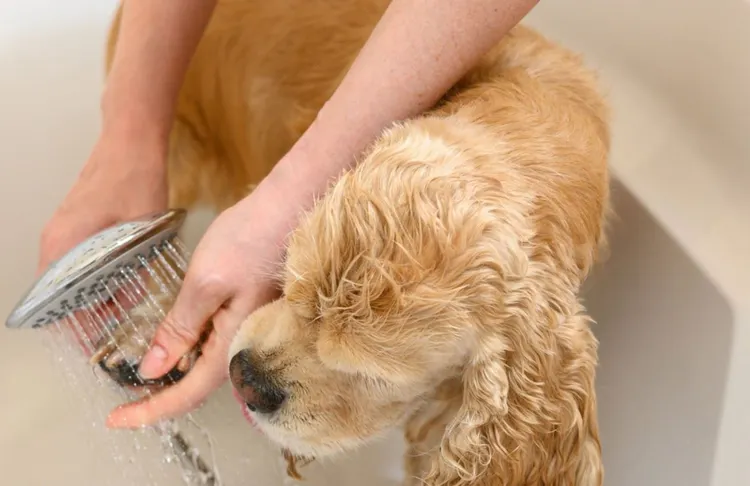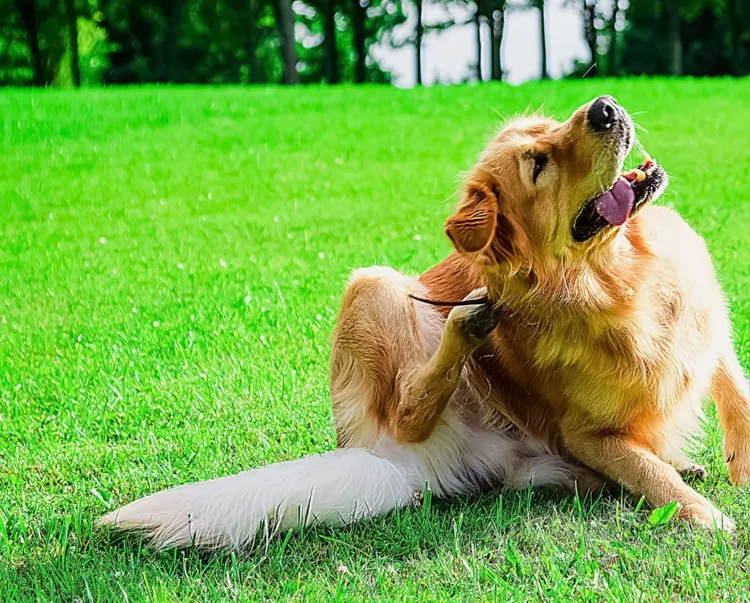If your dog treats grass like an enemy—scratching, sneezing, or licking excessively after outdoor play—there’s a chance they may be suffering from a grass allergy. Just like humans, dogs can develop allergies to common environmental elements, and grass is one of the most common culprits.
In this post, we’ll explore everything you need to know about grass allergies in dogs, including symptoms, eco-friendly treatments, and practical solutions for managing your dog’s allergy naturally.
What Is a Grass Allergy in Dogs?
A grass allergy occurs when your dog’s immune system overreacts to certain proteins found in grass, mistaking them for harmful substances. This hypersensitive reaction triggers the release of chemicals like histamines, which cause a variety of uncomfortable symptoms.
Why Do Dogs Develop Grass Allergies?
Some dogs are genetically predisposed to allergies, especially certain breeds like Golden Retrievers, Boxers, Bulldogs, and Terriers. Environmental factors also play a role—dogs that spend a lot of time outside may be more exposed to allergens like pollen and grass. However, any dog can develop an allergy to grass over time, particularly if they have other allergies (such as food or dust mite allergies).
Is Grass Pollen the Problem?
In many cases, it’s not the grass itself causing the allergy, but the pollen released by grasses, especially during spring and summer months when pollen counts are higher. Dogs can inhale or absorb these allergens through their skin, leading to reactions ranging from mild itching to severe discomfort.
Symptoms of Grass Allergy in Dogs
Recognizing the signs of a grass allergy is the first step toward managing your dog’s symptoms effectively. Common symptoms include:
1. Excessive Itching and Scratching
Dogs with grass allergies may experience intense itching, especially on their paws, belly, or ears. You might notice them scratching more than usual or biting at their feet after being outside.
2. Red, Inflamed Skin
Grass allergies can cause inflammation, leading to red, irritated skin. Some dogs may develop rashes, particularly in areas with less fur, such as the belly or armpits.
3. Licking and Chewing Paws
One of the most common signs of a grass allergy is a dog obsessively licking or chewing their paws after being outside. This is often due to grass pollen and allergens coming into contact with their skin.
4. Sneezing and Watery Eyes
Dogs with grass allergies may sneeze frequently, and you might notice watery or irritated eyes. These symptoms resemble hay fever in humans and are a clear indication that your dog is reacting to environmental allergens.
5. Ear Infections or Hair Loss
Allergic reactions can lead to secondary issues like ear infections, particularly in breeds with floppy ears. Repeated scratching or licking may also result in patches of hair loss, especially around the paws and face.
Natural Remedies and Eco-Friendly Treatments
If your dog shows signs of a grass allergy, there are several natural and eco-friendly remedies you can try at home to help manage their symptoms and reduce their exposure to allergens.

1. Frequent Paw Washing
After outdoor playtime, washing your dog’s paws can help remove pollen, dirt, and allergens. Use an eco-friendly pet wash made with natural ingredients like aloe vera or oatmeal, which are gentle on the skin. Keeping your dog’s paws clean can help reduce the risk of licking and chewing.
How to Wash Your Dog’s Paws:
- Use lukewarm water and a natural, pet-safe shampoo.
- Gently scrub each paw, paying attention to the spaces between the toes.
- Dry the paws thoroughly with a clean, soft towel.
2. DIY Soothing Sprays
You can make a simple, natural spray at home using chamomile tea or diluted apple cider vinegar. Both have anti-inflammatory and soothing properties that can help reduce itching and irritation.
Chamomile Tea Spray:
- Brew a strong chamomile tea and let it cool.
- Pour the tea into a spray bottle and apply it to the affected areas.
- Chamomile helps soothe skin irritation and reduces redness.
Apple Cider Vinegar Spray:
- Mix equal parts water and apple cider vinegar.
- Spray onto itchy areas or wipe your dog’s paws with a cloth dipped in the solution.
- Be sure to avoid any open wounds, as vinegar can sting.
3. Coconut Oil or Oatmeal Baths
Coconut oil is a natural moisturizer and can be applied directly to irritated skin to relieve dryness and reduce inflammation. Alternatively, you can give your dog an oatmeal bath to calm their skin and provide relief from itching.
Oatmeal Bath Recipe:
- Grind a cup of plain oats into a fine powder.
- Add the oatmeal to a bathtub filled with warm water.
- Let your dog soak for 10-15 minutes before rinsing thoroughly.
4. Natural Allergy Supplements
Several natural supplements can help strengthen your dog’s immune system and reduce allergic reactions. Some of the most effective supplements include:
- Quercetin: Known as “nature’s Benadryl,” quercetin is a natural antioxidant that can help reduce inflammation and histamine production.
- Fish Oil: Omega-3 fatty acids found in fish oil can help reduce inflammation and improve skin health.
- Probiotics: Supporting your dog’s gut health can improve their immune system and reduce allergic reactions.
Long-Term Allergy Management
While treating symptoms can provide immediate relief, it’s also important to think long-term when managing your dog’s grass allergies. Here are a few ways to minimize their exposure to allergens and create a more comfortable outdoor environment.
1. Create a Low-Allergen Outdoor Space
If your dog spends a lot of time in the yard, consider planting hypoallergenic grass varieties that produce less pollen and are gentler on sensitive skin. Some grass types, like buffalo grass, are known to be low-pollen options and may cause fewer allergic reactions.
2. Eco-Friendly Lawn Care
Avoid using chemical fertilizers, pesticides, or herbicides in your yard, as these can worsen your dog’s allergies and irritate their skin. Instead, opt for organic lawn care products and natural pest repellents. Look for brands that are certified eco-friendly and safe for pets.
3. Limit Outdoor Exposure During High Pollen Seasons
Grass pollen is at its highest during the spring and summer, so it’s a good idea to limit your dog’s time outside when pollen counts are high. You can check local pollen levels and try to avoid long outdoor activities during peak allergy seasons.
When to Consult a Veterinarian
If natural treatments don’t seem to alleviate your dog’s symptoms or if they experience severe reactions, it’s important to consult a veterinarian. Some dogs may need prescription antihistamines, steroids, or other medications to control their allergies. A vet can also perform allergy testing to determine the specific cause of your dog’s symptoms and recommend a treatment plan tailored to their needs.
Signs That Require Veterinary Attention:
- Persistent or severe scratching and itching
- Swollen, red, or infected skin
- Difficulty breathing or swelling around the face
- Frequent ear infections
A veterinarian might also recommend allergy shots or immunotherapy, which can help desensitize your dog to allergens over time.

A grass allergy doesn’t mean your dog has to stay cooped up indoors all year long. With the right combination of natural treatments, eco-friendly practices, and veterinary care, you can help your dog manage their allergy symptoms and continue to enjoy outdoor adventures.
By being proactive and creating an allergen-friendly environment, your pup can romp through the grass without all the sneezes, scratches, and discomfort. With these eco-conscious solutions, you’re not only supporting your dog’s health but also contributing to a greener, more sustainable world.



